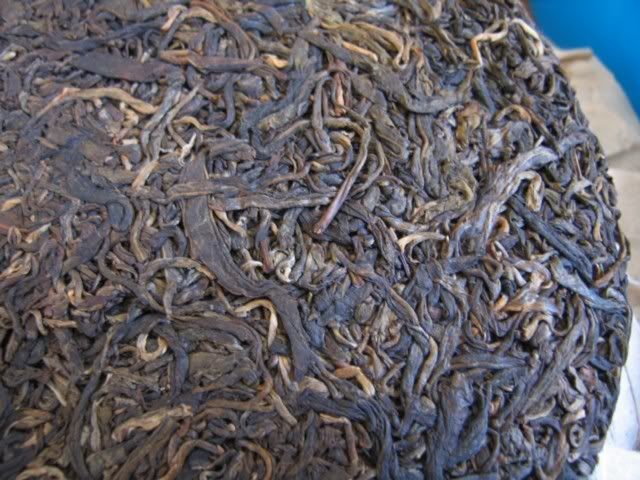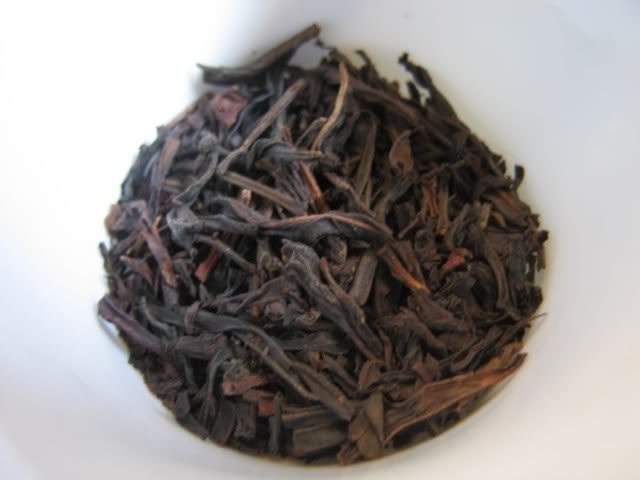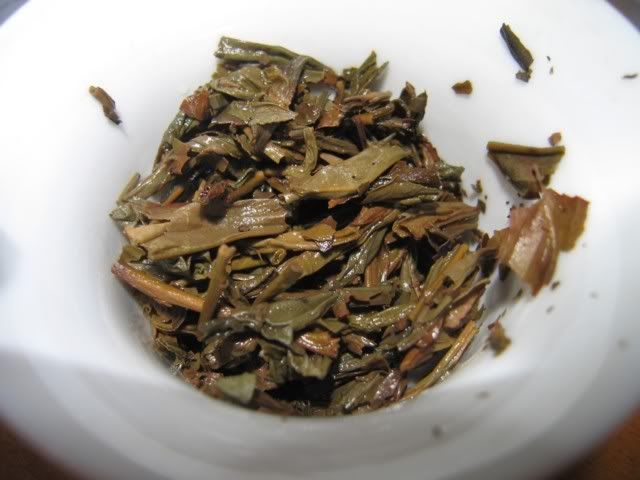I tasted this tea a little while back, and wrote some notes on it. I figured I will revisit it today. The Yecha is almost not worth drinking again.
Let’s cut to the chase and show you the infusion notes I took… I usually don’t, but after 3 infusions today I thought I should.
1st — good qi, clear, light, smoke

2nd — BITTER, rougher, unpleasant, but feeling the qi quite strongly

3rd — similar, weaker
4th — sour, smoke still there, rough, bitterness dying a bit
5th — sourness persist, with a hint of smoke, bitterness remains
6th and on — more of the same…. in weaker permutations

I think as the notes say… the tea is bitter, strong, and I’d say powerful. There isn’t as clear a note of huigan as I noted last time, probably because I consciously used less leaves today to see if the tea tastes different that way. The bitterness in the second infusion was almost overwhelming… if I were a regular tea drinker, I would’ve given up. I have to say that from that point on… the tea was largely unpleasant until about the 8th or 9th infusion, when it got weaker again.
The taste of the tea also doesn’t really jive with what I understand as a Yiwu tea. Over the past year or so, I’ve tasted at least a few dozen cakes that are labelled Yiwu. Obviously, not all of them taste the same, as Yiwu is not a tiny area and there is definitely some variation in the taste of each production. However, there is an underlying taste profile that is largely similar and is very distinctive of what I now understand as the “Yiwu taste”, and I’d say most of the teas that are creditably Yiwu share that Yiwu taste, especially among the higher end stuff that I’ve found from various sources. I can smell a bit of this Yiwu taste in the dry leaves of this cake, but I can’t say I’m really tasting it in the tea that I am brewing with this. Now, Mr. Chen is obviously a big name in puerh circles, and I’d imagine he knows what he’s talking about when making a Yiwu tea, but at the same time, I cannot but help wonder if this is truly Yiwu at all, or if it might be one of those “greater Yiwu area” teas. This cake stands out among the higher end stuff to be called Yiwu but not tasting much like any of the other ones, so I really wonder if this is what it claims to be. I’ve tried one cake, for example, by Zhongcha this year, also Fall 2006, that is precisely one of these “greater Yiwu” teas, and one of the things is the much more pronounced bitterness from that cake.
Another of the things I noticed more obviously this time is the sheer amount of broken bits of leaves in this tea. I threw one whole piece of the cake in without breaking it apart, but every infusion I got a lot of bits of leaves in the bottom of my fairness cup. This is from something like the 12th infusion:

Sorry it’s dark, but you can see there’s still a fair amount of stuff (I clear out all the broken bits every round, so what you’re seeing is all coming from one infusion).
You can also see the amount of broken leaves from the wet leaves. For example… I poured out the wet leaves, but inevitably some leaves are left in the gaiwan… look at this:

And the leaves that were poured out:

Closeup:

The amount of small, little pieces is very high. I couldn’t pick up any leaves without getting my fingers covered with little pieces, each no more than about 1mm-2mm long on each side.
This prompted me to go back to the one piece of the tea left remaining in my bag. I took it out and took some pictures. What I did today to get the tea I brewed was to break the one big piece remaining into two halves, and I used one while keeping one. I split the piece down the middle horizontally, so that I basically peeled half the piece off. You can see the one intact side of the cake:

And the side that I peeled off

Not a lot of broken bits obvious in these cases. I tried tapping the piece thoroughly to see what comes off, and this is the result:

This still doesn’t come close to the amount of fluff that I got from the tea. I have a lingering suspicion that mixed in with the cake is a lot of leftover bits of leaves that is a result of processing/transportation. Instead of sifting them out before pressing…. they all got dumped into the cakes and pressed together inside. Otherwise, I simply could not explain the amount of broken tea that is in this, seeing as I didn’t break the piece into small bits before brewing it.
Is this deliberate? I haven’t seen a high quality cake that has such broken leaves. I’m sure the broken leaves contribute to the roughness and the bitterness of the tea. They infuse faster and stuff come out faster. Could this possibly be good for aging? I don’t remember older cakes being filled with such fannings (this is fannings). All I can think of is that somebody is being sloppy.





























 RSS - Posts
RSS - Posts
I took you at your suggestion and have been reading some of your old post-Covid posts. I haven’t been to…